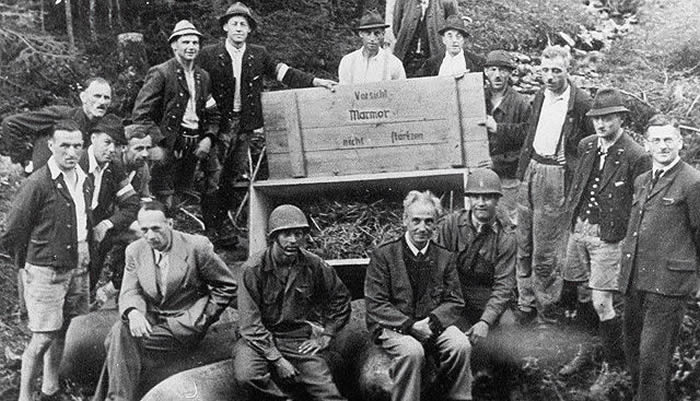Art in Mine
Sonderauftrag
During the Second World War, the tunnels of a salt mine in Altaussee, Austria were used to store invaluable works of popular art, including masterpieces like a Madonna by Michelangelo, paintings from Dürer, Rubens, Vermeer, Rembrandt and perhaps even Leonardo’s Mona Lisa. Hitler´s insane plans included the Sonderauftrag Linz, which was the establishment of a very own art museum in his hometown Linz, Austria. His personal collection that he collected over years by just taking it from museums or personal collections destined to grace the so-called Führermuseum. But Hitler also foresaw the case of the defeat of the Third Reich and imposed to destroy everything the Nazis ever created: factories, roads, bridges and also the art collection in the Salt Mine. By a single touch of a button the mine would have been exploded. But a few days before the actual end of the war Hitler imposed to forget the original plan.

A particularly loyal and high positioned Nazi from Austria did not trust that rumor and managed to import eight American plane bombs, which had fallen on Linz but not exploded, into the mine. To avert suspicion, the bomb cases were marked “Vorsicht Marmor, nicht stürzen” (Take Care: Marble, Do Not Drop). Luckily, two mineworkers have had their doubts towards these cases and opened them. The artworks were successfully saved and with them the salt mine which is a museum today that informs about the Sonderauftrag Linz and the saving of the art works. In 2001 the Austrian media reported about the discovery of an archiv of photographs of 5600 artworks confiscated during the Third Reich.
[widgetkit id=15124]
Body Missing
This discovery gave the installation of the artist Vera Frenkel a new weight. In 1995 Vera Frenkel installed her artwork Body Missing in the salt mine. The work is a multimedia installation consisting of video, photo and text pieces. Six wall texts and photographic transparences in light boxes serve as viewing stations in the salt mine. The work has its starting point in the question of the fate of the works of art that have been missing since the Second World War, and Frenkel stages a major inquiry into the art policy of the Third Reich. The project was first installed in Linz in 1994 and refers to the 6000 stolen works of art that were stored in salt mines not far from that city.

Comic Art in the Mine
While the Body Missing Exhibition dealt with the Third Reich and Hitler topic, a Cartoon exhibition does not touch this issue at all. On the contrary, it brings comic art to this historically important place and demystifies it. One of the five Cartoonists is Oliver Ottitsch. He is an up-and-coming talent from Vienna, Austria. With his black humor and hilarious drawings he developed to an well-known Cartoonist in the scence of Eulenspiegel, Titanic and Nebenspalter. Right now, he is in Istanbul and establishes relationships with Penguen, Leman or Uykusuz. Some of his Cartoons are already translated and ready to amuse you. Enjoy!
[widgetkit id=15149]

